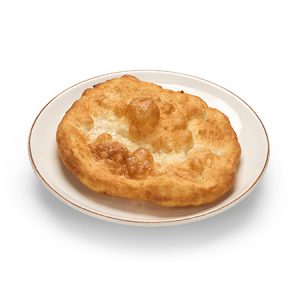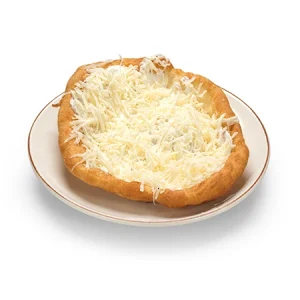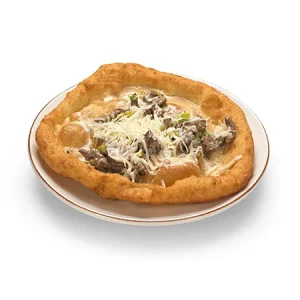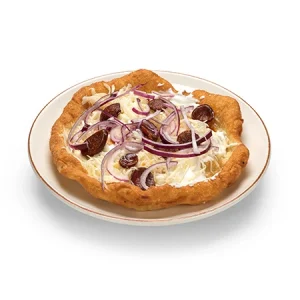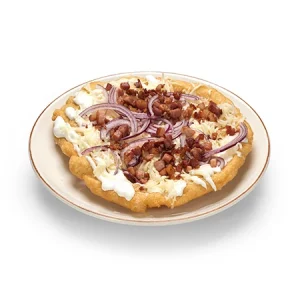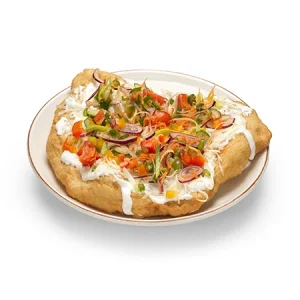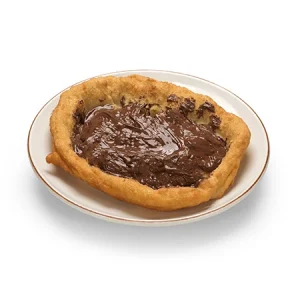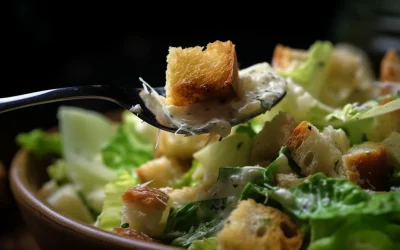Lángos is one of the most well-known and beloved dishes of Hungarian gastronomy, serving as an essential companion to summer festivals and beaches. This is no different at the Hell’s Kitchen Restaurant, where our visiting guests can explore unique and special flavors of the lángos. But where does this tasty, deep-fried dough originate from, and what are its peculiarities? Let’s discover the world of lángos together!
The origin and the name of “lángos”
The history of lángos is rooted in the cuisine of Hungarians (and other Central European peoples). Its origins likely date back to the Middle Ages, when it made its way into peasant cooking. Lángos likely appeared in Hungary around the time of the spread of Christianity when villagers sought quick-to-make foods without meat that occasionally adhered to fasting regulations during strict fasting periods.
The name "lángos" derives from the word "láng" (meaning: flame) referring to the fact that the dish is fried in hot oil, with the flames surrounding the dough giving it its name. Originally, lángos was primarily sold along the streets of restaurants and markets, but over time its popularity grew, making it a staple food at family gatherings, festivals and fairs.
Preparation of “lángos”
The classic lángos recipe requires flour, water, salt, and yeast, which provides an extra soft texture to the dough. The ingredients are kneaded together and then allowed to rise until they double in size. After this, the dough is rolled out individually and fried in hot oil until golden brown. Lángos has many variations: the most popular version is served with garlic, sour cream and grated cheese, but there are also options to add other toppings like ham, sausage or fresh herbs.
Specialties and interesting facts about “lángos”
Regional variations
Lángos is popular not only in Hungary but also in other countries, such as Romania, Slovakia and other nations in the Balkan Peninsula. Each region has its own version; for example the Romanian "langos" is often much thinner, while the Bulgarian "mekitsa" is sweetened with sugar.
Healthier alternatives
There are many healthier alternatives to lángos that can reduce the calorie and fat content without losing the delicious taste. Instead of frying in oil, you can bake lángos in the oven or in an air fryer, which absorbs less fat. Instead of traditional white flour, you can use whole wheat flour or other flours with a higher fiber content, such as spelt or oat flour, or you can even add vegetables such as zucchini to the dough. It is also worth experimenting with the toppings: instead of fatty sour cream and cheese, you can choose yogurt, vegetables, hummus or even low-fat cottage cheese. This way, you can make a lighter but equally tasty version of lángos.
Lángos-Festivals and competitions
Lángos is not just a simple dish, but a true cultural phenomenon, celebrated by numerous festivals and competitions. These events are meeting places for lángos lovers, where, in addition to traditional flavors, the newest, most creative variations are presented. In lángos-eating competitions, participants compete to see who can eat the most lángos in a given time, while in lángos-baking competitions, expert juries award the most delicious and unique lángos. These fun events are not only about gastronomy, but also about community and the preservation of traditions. Lángos festivals are real family programs, where everyone can find flavors and entertainment to their liking.
In Hungary, lángos is at the center of many festivals, such as the Badacsony Lángos and Donut Festival or the Bánhorváti Potato Lángos Festival. At these events, not only is the best lángos recipe sought, but there is also an attempt to make the largest lángos!
Lángos in Every Form
New trends surrounding lángos are increasingly spreading, with sweet versions filled with jam or chocolate also making an appearance. These unique flavor profiles add a new dimension to the traditional dish.
In our restaurant, you can find plain, cheesy sour cream-topped, beef stew, ratatouille, Hortobágyi, creamy tenderloin, sour cream with fresh salad, peasant-style sour cream, bacon, as well as sweet variations like Nutella, and Nutella-pistachio flavors.
- Langosh natur, without toppings
- Langosh with cheese & sour cream
- Lángos with creamy tenderloin
- Langosh rustic style
- Langosh Hell's Kitchen style with bacon
- Vega lángos with vegetables
- Langosh with Nutella & Pistachio
- Langosh with Nutella
Lángos is more than just a simple dish; it is a living symbol of Hungarian culture and tradition. The way it is prepared, the variety of toppings, and the possibilities it offers all contribute to making lángos a favorite dish of Hungarian folk cuisine. The next time you enjoy a lángos, remember that this delicious treat has a centuries-old history and continues to evolve!

